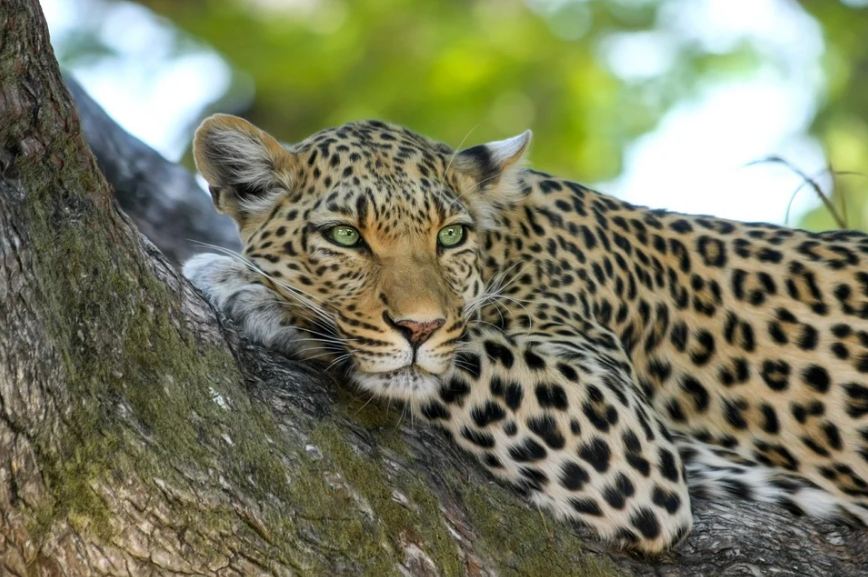Almost half of the African continent is wildlife. With that at your disposal, it’s understandable to have no idea where to start. Should you enjoy the hidden waterways of Okavango in Botswana? Or would you rather traverse the endless plains of Serengeti?
Your preference for safari comes down partially to wildlife. For most uninitiated or first-timers, their top five wish list includes the ‘Big Five,’ namely the buffalo, leopard, rhino, lion, and elephant. Many sites boost most of these, if not all, but some extend better benefits than others. There are also the equally iconic hippos, giraffes, zebras, and smaller creatures like hornbills and meerkats to dung beetles and chameleons.
The good news? You can’t go wrong with whatever you choose. While each destination has its pros and cons, the sheer variety and richness of each of them and the glory of the African backdrop are sure to blow you away.
Here are some of the best African safaris to visit if you’re a first-timer, a second-timer, or an aficionado.
FOR FIRST-TIMERS
1. Masai Mara, Kenya
The northern extension of Serengeti, Masai Mara, showcases vast wildebeest herds and other gazers that appear from July to October that attract predators like the cheetah and lion in no time, helped by the big cats’ ease around the vehicles and the open terrain. You can also witness giraffes, elephants, and rare black rhinos.
2. Serengeti National Park, Tanzania
Tanzania’s Serengeti is arguably the planet’s best-known wildlife spectacle. Everything that’s in Masia Mara also applies here, from the ease of sighting predators to the scale of the great migration. However, Serengeti is almost ten times bigger at nearly 15,000 sq km, meaning its plains are much more endless, and there’s a greater variety in habitat.
3. Kruger National Park, South Africa
Some argue that the Kruger National Park is too managed and crowded. Sure, its large camps and tar road aren’t everybody’s cup of tea, but its 22,000 sq km mean there’s room for all comers, with adequate bush camps and backroads to satisfy others’ wilderness cravings.
FOR SECOND-TIMERS
1. Mana Pools & Lower Zambezi National Park, Zambia/Zimbabwe
Zambezi River turns east towards the Indian Ocean over a broad floodplain within towering escarpment walls. During the dry season, the valley’s oxbows, river terraces, and mosaic of islands are filled with wildlife, big herds of buffalo and elephants move from the hills, while lions and other predators hunt prey by the river.
You won’t be seeing giraffes, rhino, and wildebeests, but this area is more for quality than quantity. The picturesque backdrop invites you to sit down and soak everything in, especially the wildlife wandering through the riverside lodges.
2. Okavango Private Reserves, Botswana
Several private concessions have a more exclusive window on the Okavango. Each one has its attractions based on the terrain—some more water-based than the others. The reinstatement of the black and white rhinos means that the site now boasts the whole of Big Five. At the same time, the area highlights Africa’s dramatic buffalo/lion interactions and best wild dog viewing.
3. Laikipia Plateau, Kenya
The plateau lies by the southern boundary of the northern frontier of Kenya, with scenic glimpses of the snow-capped Mt. Kenya to the south. It has comparable wildlife to that in nearby parks of Buffalo Springs, Meru, and Samburu. It covers about twelve private concessions, distinctly the Lewa Wildlife Conservancy, which has joined forces in one massive conservation initiative. This initiative protects one of the healthiest wildlife populations in Kenya, with buffalos, elephants, and every major predator in astounding numbers, in addition to Grevy’s zebra, over half of the country’s black rhinos, and reticulated giraffe.
FOR AFICIONADOS
1. Northern Damaraland, Namibia
The harsh landscape of the semi-desert Damaraland lies beyond any national park. Northern Damaraland is an area where ancient rock art, unique plant life, and dramatic geology are of as much interest as its wildlife. Nevertheless, a fine selection of game roams the sandy wastes and stony plains, with the pride of place being the uniquely desert-adapted black rhinos and elephants.
2. Katavi National Park, Tanzania
Most African parks sell the ‘ultimate wilderness’ line, but the Katavi National Park is hard to beat, that only a couple hundred visitors arrive there every year. Its terrain covers two massive grassy plains and mixed woodland, where the herds convene. The only permanent water sources are the Kapapa and Katuma Rivers, which brims with hippos during the dry season. Elephants are abundant, while lions trail the many buffalos.
3. North Luangwa, Zambia
The ultimate exhilaration of getting face to face with a lion on foot in a safari is offered by this remote park with similar terrain to the South Luangwa but with a wilder feel and only a portion of the visitor numbers.
Only three small camps are operating in the park, so you’ll feel like you have the place all for yourself. Access is typically by air, and the activities are almost entirely by foot. Excellent guides trail the wildlife and unveil the secrets of the pristine environment.

